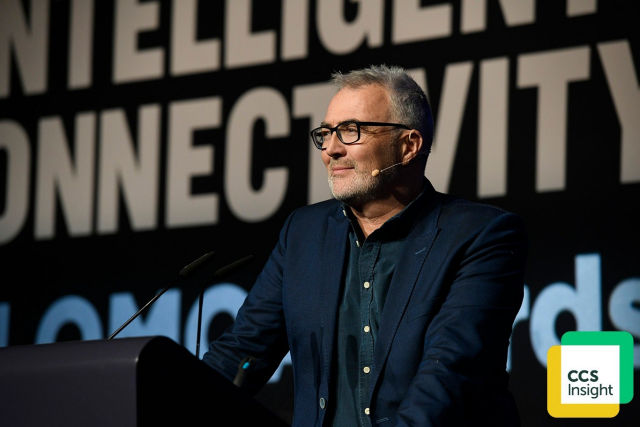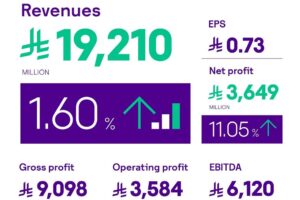Countries in the Middle East, particularly the UAE and Saudi Arabia, have featured prominently in international discussions on digital infrastructure, especially 5G-Advanced (5G-A), or 5.5G, making the region a key frontier in leading the next wave of innovation globally.
Speaking at the Mobile World Congress (MWC) Shanghai, Shaun Collins, chairman of CCS Insight, a London-based analyst house known in the telecommunications sector, spotlighted the Middle East’s roaring appetite and drive to adopt advanced technologies like 5G-A. “The Middle East is almost becoming the cockpit,” he said.
Carrier success cases from the Middle East
There is an industry-wide consensus that 2024 will be the first year of the commercial launch of 5G-A services. Collins added that the cutting edge of 5G-A deployment is in China and some of the smaller Asian markets, while the United States is moving in a slightly different way.
Carriers from the Middle East, such as du, e&, and Zain, have played a significant role in promoting 5G-A deployment. Their active participation in telecommunications industry events like MWC Barcelona and MWC Shanghai, where the theme of 5G-A deployment has continued to dominate, has further solidified their leadership role in the industry, demonstrating their influence and commitment to technological advancement.
Executives from du and e& were invited to speak and jointly launch a pioneer program at the MWC Shanghai, the leading connectivity event in the Asia Pacific region. They also shared their experience in making the deployment of 5G-A networks a business success.
Senior analysts have noted that the Middle Eastern countries are not just interested in 5G-A; they are ready for it. This readiness is largely due to several factors, including ambitious national digital blueprints to transform their economies and the quick utilization of 5G capacities, as deploying fiber fixed networks has been challenging.
“In a few Middle Eastern countries, there they have another factor, which is that it is not easy to deploy fixed networks, and their 5G network is running at full capacity,” explained Brian Chamberlin, executive advisor at the carrier marketing department of Huawei. The global ICT player has been at the forefront of pioneering innovation within the 5G-A industry.
Globally, the rollout of 5G-A is still patchy in places other than China, the Middle East, and the United States. Collins highlighted that it is challenging to deploy at scale at the moment.
5G-A enhanced when combined with AI, Cloud
China’s leading three carrier giants – China Mobile, China Unicom, and China Telecom – have been vying to deploy 5G-A networks in certain strategic locations where there is a need for 5G-A networks from consumers or enterprises. All three carriers opened some of their trial runs to visitors during the Shanghai show. China Mobile plans to expand its 5G-A networks to reach 300 cities, while China Mobile has already announced 5G-A packages for individual users in Shanghai.
More importantly, industry leaders reiterated that it is important to combine 5G-A with powerful technologies like Artificial Intelligence (AI) and Cloud to find real business scenarios for the 5G-A networks.

“Of all the technologies I have seen arrive in the connected and digital world, I don’t think I have seen anything like AI. AI will deploy quicker, develop quicker, and impact our lives quicker than anything we have done before,” Collins said.
“I haven’t been in a single meeting where at least 75 percent of that meeting has been taken up by AI. I am just surprised in a connectivity [event] such as MWC Shanghai that AI is playing such an enormous part in the thinking and planning of what’s coming next,” he added.
“As the customers come to us and talk about what they are doing with AI, it became clear to us that AI is not just here. It is being used in a way much broader than we expected,” said Chamberlin. “It is important to think about where it is going and who has access to it.”
Collins said that combining 5G or 5G-A with Cloud and AI is essential, as they are symbiotic.
“5G is fantastic, but to make it an absolute killer, it has to partner with other things. When we talk about 5G, AI, and Cloud making each other better, those are the three big things. They will all do well, but they will do exceedingly well by being together,” he said. “Creating these partnerships from both a technological and commercial point of view is important.”
“It is the combination of these technologies, not just the connection, but the connection plus those services, delivered by the Cloud, and powered by AI, that is going to create incredible things going forward,” said Chamberlin.
Collins said that AI is making a difference for the carrier business, too, as they are deploying AI in the RAN to make it more efficient and sustainable, adopting more of the standalone core to get benefits in terms of determinacy, latency, and slicing, and device manufacturers adopting AI. Similarly, David Wang, executive director and chairman of the ICT Infrastructure Managing Board at Huawei, said that we are ushering in the era of mobile AI.
A landmark UN resolution passed earlier this week, unanimously adopted by over 140 nations, including the United States and spearheaded by China, underscores the urgent need for global cooperation on AI. The resolution stressed the importance of a level playing field in AI development, ensuring equal opportunities for all countries, particularly developing nations, to benefit from this transformative technology. Recognizing the widening gap between developed and developing countries in the rapidly advancing field of AI, the resolution champions a collaborative approach to empower all nations and unlock AI’s full potential for the betterment of humanity.
Mobile AI is leveling out the playing field for emerging countries
Chamberlin said that mobile connectivity and AI are leveling out the playing field for even the developing world in a surprising way, citing amazing applications from Algeria and Zimbabwe. He explained that these countries were looking at the problems from a very different angle from compared to that of advanced countries. “That helped me realize that AI, Cloud, and connectivity are actually going to level out the world in a way we’ve never seen before,” he said.
Nevertheless, the industry veterans said that they see challenges, too, such as the sustainability issue, as the 5G-A network and AI equipment are becoming increasingly power-hungry. “It is a high priority for the carriers,” said Collins.
He also highlighted the gap in talent and the skill sets needed globally. “How we use the AI tools will differ from how we use search engines. We will have to put in place a big education program,” he said.












